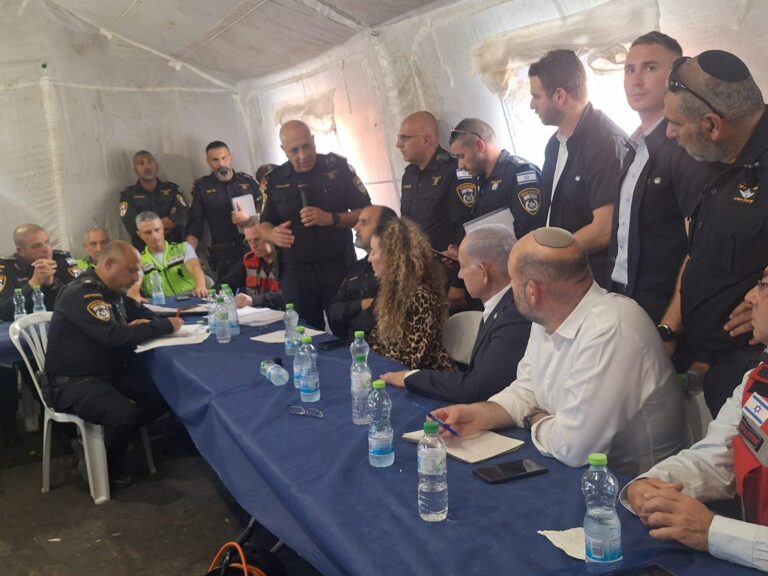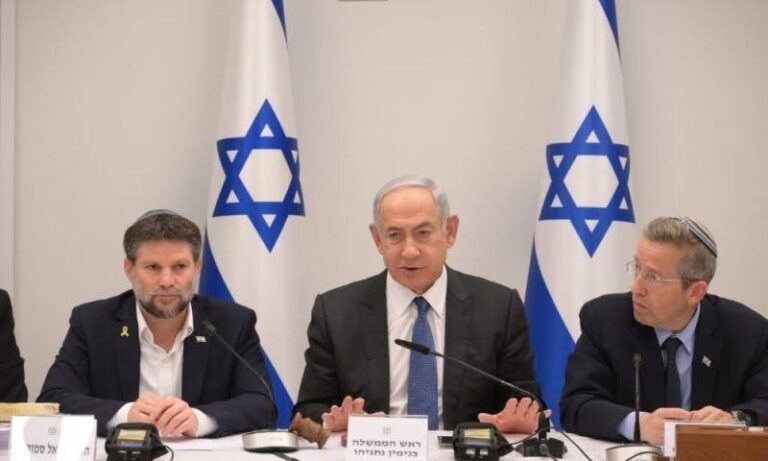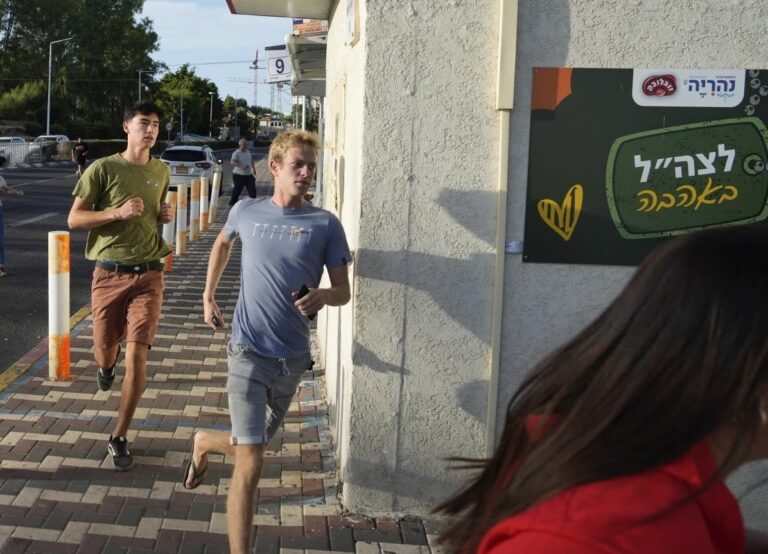By Rabbi Yair Hoffman for 5tjt.com
Today is the 138th Yartzeit of Rav Yisroel Salanter zt”l, founder of the Mussar Movement. It is unfortunate, however, that many people are not familiar with the writings and Mussar theory of Rav Yisroel.
This author would like to suggest that his writings can be understood in contemporary times through the rubric of Game Theory – lehavdil.
THE MUSSAR THEORY
What was Rav Yisroel’s Mussar theory? He posited that there is an ideal method of behavior specific to each person’s personality, intellect, and capabilities in every life situation. The pathway in which to arrive at this ideal method is not only to improve some specific character traits, but to train ourselves in three specific areas of knowledge.
These three areas of knowledge are called Limmud haMussar, Chochmas HaMussar, and Chinuch haMussar.
- Limmud HaMussar is the general background one must have in the field of Mussar study.
- Chochmas HaMussar is in depth knowledge in these areas.
- Chinuch HaMussar is the means to employ the knowledge practically when the need for it comes up in life.
An analogy to general game theory is instructive here.
Contemporary game theory dates back to the year 1944. There are Nobel Prizes given to those who produce insights in Game Theory. It is a field applicable to economists, social scientists, and biologists. It was given its first general mathematical formulation by John von Neuman and Oskar Morgenstern in 1944. It is also useful in understanding the theories of Rabbi Yisroel Salanter in Mussar.
Imagine, if you will, the following bizarre but eye-opening analogy:
You have been transported to another world or dimension. In this dimension, you are living in a world of games. Every person you interact with challenges you with a different type of game. If you choose not to play – you will not be given access to food and water. Only people that play get to eat and drink. Winning is also important. If you lose any game on that day – you will be limited to half-rations. There are three scenarios to explore.
- The first person approaches you with a game of tic-tac-toe. He goes first and marks the middle box. What do you do? The next person approaches you with the game of Othello. How should you approach this game?
- Someone approaches you with a $100 bill that he is auctioning off to the highest bidder. With this auction, however, the runner-up who lost the bid must also pay what he had bid. You cannot communicate with anyone else participating in the auction. You have bid $5 already to qualify for your half-rations at least. The opponent bids $10. What will you do?
- Then a football is punted and headed straight toward your head. What do you need?
- For scenario #1, what you need is Limmud HaMussar, so to speak of the full gamut of games.
- For Scenario #2, you need Chochmas HaMussar of the depth of how this game in splayed.
- For Scenario #3, you will need Chinuch HaMussar – of the best strategy to implement it when the sudden need for it arrives.
Limud HaMussar is a background in the correct strategy for each possible game you will face. For example, in tic-tac-toe you can lose unless you respond with taking a corner. You need this knowledge base. In Othello, you need to get to the end lines and then work toward getting a corner. There are best practice strategies for checkers and chess as well.
Chochmas HaMussar is an in-depth understanding of how best to approach the auction. Generally speaking, engaging further in the auction is a losing proposition – because the nature of people is to throw good money after bad and to continue even beyond the $100. However, if one delves into the manner and can determine the nature of all of your competitors in the auction, it may be worthwhile to continue. How so? Most people can be categorized as either sharks or dolphins. If you can convince them that you are a shark and are positive that they will behave as dolphins – then it is worthwhile to engage in the auction.
Chinuch HaMussar is the strategies that are required to employ the Limud HaMussar at a moment’s notice. When the ball comes at you – you need to be prepared or the ball with hit you on the head. You need to be prepared to catch the punt and run with it on a second’s notice. You also need to be able to size up the situation at all times to be able to implement your Limmud HaMussar and perhaps the Chochmas HaMussar at a moment’s notice. If you blink, you can sink. Rabbi Salanter proposed that the most effective means of employing Chinuch haMussar is through emotionally making it a part of one’s subconscious mind through a process known as sfasayim dolkos. The idea involved repeating the principle in an emotional tone so much that it becomes a part of one’s psyche. Most people do not employ such means nowadays, however, the idea of taking the knowledge and being able to employ it in real life situations is still as necessary as ever. [Who exactly changed the term of sfasayim dolos to Chinuch haMussar? This author believes it was the Alter of Slabodka, but let’s leave this aside for now]
Now let us transfer all of this game theory in the analogy to actual life. Character-building and moral behavior matter. The Vilna Gaon once said that without the struggle of repairing our character – of what purpose is life?
Rabbi Yisroel Salanter developed a highly sophisticated method of Mussar Theory and proposed this system to his students in a series of 31 letters printed in a work entitled Ohr Yisroel. What follows is a restatement and re-organization of this system, including an amplification of the underlying message of Rav Salanter. Occasionally, ideas from some of his immediate students, or grand-students, or even great grand-students will be employed to help further this along.
- The Creator is the Ultimate Giver. We become greater by imitating Him. This is the Mitzvah of v’halachta b’drachav. The Gemorah in Shabbos tells us mah hu rachum af attah rachum. Rav Yisroel Salanter explains that we can give to others by influencing them in Mussar Theory (Ohr Yisroel 5.1). This helps get others on track, but also helps improve our own ways.
- A good way to develop MUSSAR THEORY is to promote the insights and benefits of MUSSAR THEORY to others. (1.4). This means, not just introducing it to them – but actively promoting specific insights and also specific benefits. Creating analogies in secular knowledge as well as history helps promote Musar Game Theory too. An example of this is the idea espoused by one of the leading Talmidim of the Alter of Slabodka, Rav Dovid Leibowitz. He explained that at times, in order to motivate ourselves to do the right thing – we have to burn our bridges, so to speak. In parshas b’shalach, the pasuk tells us velo nacham elokim derech eretz plishtim ki karov hu.
- MUSSAR THEORY explores all of the pathways, actions, and psychological aspects of the person. It is also the best manner in which to keep a person on track, awakening various motivational tools within the person (1.1)
- There are three steps involved in changing a trait: Recognizing it as a fault, controlling the fault, changing the fault. (30.4)
- MUSSAR THEORY protects a person from being distracted by the Yetzer Harah. (1.2)
- MUSSAR THEORY requires effort in both restraining oneself from committing evil as well as changing oneself into a force of good (17.2). Human beings have a potential to fall to the lowest depths. They also have the ability to rise to the highest heights.
- Even if you do not detect change in one’s personal MUSSAR THEORY – it enters the subconscious mind and makes a difference. The Yetzer Harah has an extraordinary ability to distract us from our goals. The Mesilas Yesharim describes him as Ki ish milchama hu, umelumad b’armimus – He is a man of war skilled in the art of deceiving. The best way to tackle this is the realization that growth in MUSSAR THEORY always makes a difference and enters the subconscious mind.
- MUSSAR THEORY can only be internalized by implementing tailor-made strategies. (1.3)
- MUSSAR THEORY requires daily times of studying its underlying theories. (2.1)
- There are two aspects to developing one’s own MUSSAR THEORY:
- learning from error (2.2)
- learning to use it on the fly in real-life practical situations. (2.2)
- One must draw people toward the use of MUSSAR THEORY. (2.3)
- When drawing others to it, one should highlight one’s own skills in specific areas of MUSSAR THEORY. (2.4)
- Everyone must employ MUSSAR THEORY (3.1)
- Methods invoked in refining one particular character trait may not necessarily work when refining a different trait (20.1).
- Refining a trait requires a dichotomy of sorts: gentle patience with a firm determination for rapid growth (20.2).
- Refining character requires knowledge of human psychology (20.3).
- MUSSAR THEORY has some objective guidelines and some subjective guidelines (19.3).
- For most people, man’s greatest motivation is survival. (3.2)
- Pursuing materialism is neither necessary for life nor for survival (3.3)
- To earn the Creator’s favor one should introduce MUSSAR THEORY to others. (3.4)
- Learning from error is indispensable to MUSSAR THEORY (4.1, 2.2)
- Understanding internal motivations is central to MUSSAR THEORY (4.2)
- Self-deception is often how we operate (4.3)
- We can enhance our own development MUSSAR THEORY by learning from the errors of others (4.4, 2.2)
- Our commitment to MUSSAR THEORY must be based on strong logic. (5.2)
- Influencing others in MUSSAR THEORY helps develop its intellectual underpinnings within ourselves. (5.3)
- MUSSAR THEORY must be offered to others in a way that builds on their strengths – not weaknesses. Factors such as personality, intellect and outlook must be taken into account. (5.4)
- The majority of our existence is for the afterlife – degrees of reward. (6.1)
- The easier it is to correctly apply the proper MUSSAR THEORY, the less reward one receives for not having implemented it practically. (6.2)
- There is a ten-day period each year in which MUSSAR THEORY can best be practically implemented. (6.3)
- If we set out a special place for thinking about MUSSAR THEORY – it can better help us to get on the right path. (6.4)
- Everyone can change any character trait if they work on it intelligently (30.1).
- There are two types of change – controlling the trait and transforming the trait from evil to good. (30.2)
- Employing subconscious methods is the most effective means to transform a trait (30.3)
- To strengthen faith – one should repeat aloud verses that deal with faith (24.1).
- The more you look for Divine Providence in life – the more it is given to you (24.2).
- Knowing the law helps one overcome challenges when faced with challenges (21.3)
- True humility means not being phased or insulted by anything or anyone (26.1).
- Repairing a character flaw is more difficult than repenting for a sin (26.2).
- The more one accepts tests and struggles with love – the greater his reward (26.3)
- One of the most effective means in improving a character trait is the realization that it is a must – a chok. (31.3)
- If someone commits himself to act in accordance with halacha – this creates a strong ability to overcome any trait (29.2).
- Minyan helps remove spiritual impurity (14.4).
It is hoped that this short introduction and the analogy provided here, can spur readers into a greater appreciation of the revolution that Rav Yisroel Salanter zt”l created.
AN ACTIVE SHTADLAN
There is yet another aspect of Rav Salanter that is not so well known – he was also an active shtadlan – and was the force behind the repeal of the Cantonist Decree as well as an activist in battling a disease similar to COVID-19, teh Cholera Epidemic of Vilna in 1848. [The above picture is an adjusted photo of Rav Salanter’s son, Rav Yitzchok, but with features changed to reflect his Talmid’s description]
The Cantonist Decree for Jewish children was made on August 26th, 1827 (Sept.7, 1827 according to the Gregorian Calendar) and was signed by Tsar Nicholas I of Russia twenty months after he became Tsar. It was officially called the “Statute on Conscription Duty.” Essentially, it required that Jews also perform military service, but at a higher recruitment rate than the gentile population and from a younger age. Jewish boys from the ages of 12 to 25 (but sometimes as young as 8) were taken at the rate of 4 recruits per 1000 Jewish residents. In total, about 84,000 Jewish were taken.
It was the responsibility of the leaders of the Kehillah to deliver the recruits and some adopted some very vile means of doing so. There were people called Chappers who literally kidnapped children to place the in the hands of the Tsarist army.
KIDNAPPING AND FORCED CONVERSIONS
Rav Yisroel could not stand this government sanctioned kidnapping and near-forced conversion to Christianity and made every effort to put a stop to it at the highest level of government. He created a special committee to attempt to repeal this most vile of Decrees.
A secret meeting was held in the summer of 1851 during the market of Zelwa (held each year from July 25th for 4 weeks – it lasted until the end of the 19th century). Money was raised secretly to fund a mission of deputized shtadlanim. Eliyahu Levinson of Kratinga, a wealthy student of Rav Salanter, donated 1100 rubles of his own funds toward this effort. Counting inflation this would have a modern approximate value of $22,000. The attendees of the meeting sent Rabbi Elchanan Cohen to St. Petersburg to work toward this goal and to act on the groups behalf. Rav Yisroel Salanter was the main force behind it and worked with Rav Yitzchok Elchonon Spector on it as well.
In 1852, the group had the Gomel petition presented which asked the Tsar to repeal the yet higher draft rate. The group met again that year in Bobruisk and chose two wealthy shtadlanim to go to St. Petersburg with large sums of money for purposes of helping convince government officials to try to influence the Tsar and with letters from attorneys. These two individuals were Meshulem Feivel Friedland of Dvinsk and Nissen Katzenelson of Bobruisk.
Try as they could, however, those behind all of these efforts did not see fruit with Nicholas I. He died in February of 1855. Nicholas I’s son, Alexander II took over as Tsar.
A YOM TOV
On August 26, 1856, after Russia’s defeat in the Crimean War, Tsar Alexander II, in response to appeals by the Jewish community, removed the horrifying clauses of the Cantonist Decree. It took three years to fully implement. When Rav Yisroel heard that the conditions were abrogated, he declared a Yom Tov.
MEDICAL ASSISTANCE
In 1848, the Cholera Epidemic spread to Vilna. Rav Yisroel Salanter, at great expense, rented a 500 bed hospital to take care of the sick. He convinced doctors to treat them at no charge. He also organized a group of Yeshiva students to act as first responders to help treat the victims. He issued numerous psakim as well as to how to act during the epidemic.
CONTRIBUTIONS ELSEWHERE
Most people, however, relate to Reb Yisroel Salanter as the founder of the Mussar Movement, but his contributions also included the spreading of Yeshivos too.
Rav Yisroel befriended a remarkable individual named Ovadiah Lachman, an inventor who helped fund Yeshivos and Mussar. This author is trying to get more information on Reb Ovadiah Lachman and has hired researchers to this effect. [If anyone is interested in helping fund this research – please contact the author]. After Volozhin closed, 170 bochurim were learning in the Kovno Kollel – and all this was funded by Lachman. Lachman also funded the Yeshiva in Telze as well.
One of Rav Yisroel’s Talmidim opened up the Yeshiva in Kelm, where many of the great Baalei Mussar started and launched and affected other Yeshivos. The Alter of Novardhok was also a Talmid of Rav Salanter who launched hundreds of Yeshivos. The Alter of Kelm’s talmid was Rav Nosson Tzvi Finkel who started the Slabodka Yeshiva. From Slabodka (and Kelm) emerged Rav Yeruchem Levovitz, the primary influence on the Mir Yeshiva, Rav Yaakov Kamenetsky, Rav Yaakov Ruderman, Rav Aharon Kotler, Rav Dovid Liebowitz, Rav Yitzchok Hutner, and many more. Slabodka subsequently moved to Hevron in Eretz Yisroel and taught the great majority of the leaders of Lithuanian Yeshivaleit.
CONCLUSION
In short, if we had no Reb Yisroel Salanter, we would have no Kelm, and no Telze. No Kelm, no Slabodka. No Slabodka, no great Yeshivos of America and Eretz Yisroel because after the Slabodka Yeshiva moved to Eretz Yisroel as Yeshivas Chevron – most of the Yeshivos that developed in Eretz Yisroel had learned in Chevron.
Rav Yisroel Salanter zatzal has had a remarkable impact upon our Torah world. May his Neshama have continued Aliyah and may Klal Yisroel grow ever further in Torah and Yiras shamayim so that this terrible machala cease quickly, Amain.
The author is working on a project to reprint the Alter of Slabodka’s Torah thoughts in a well-indexed manner and needs assistance and dedications to this effect.
The author can reached at [email protected]












One Response